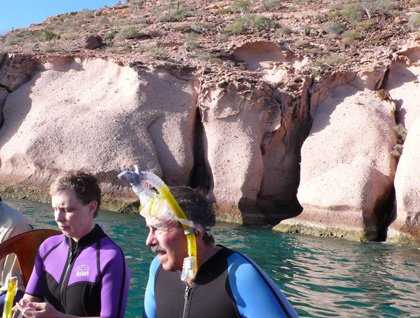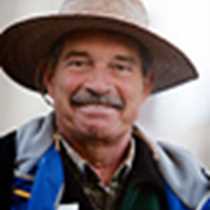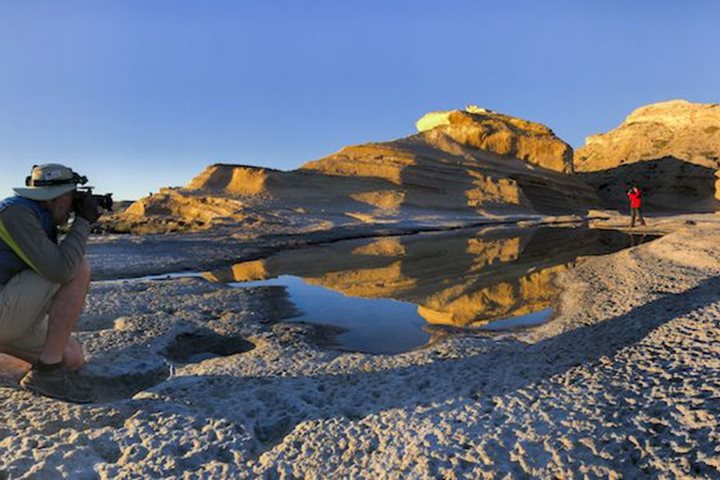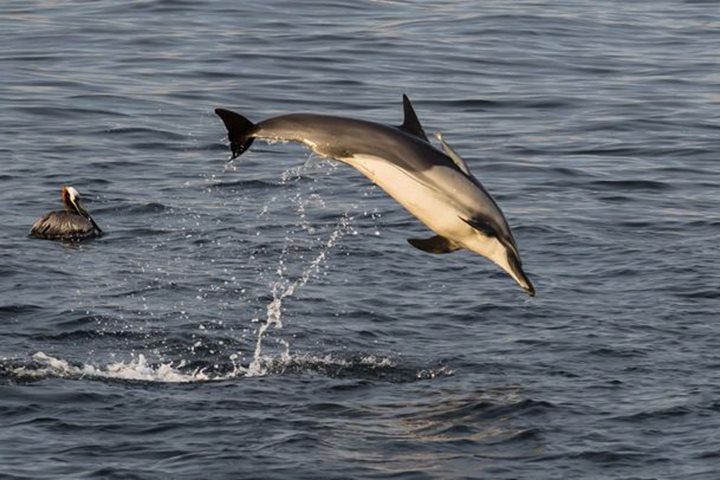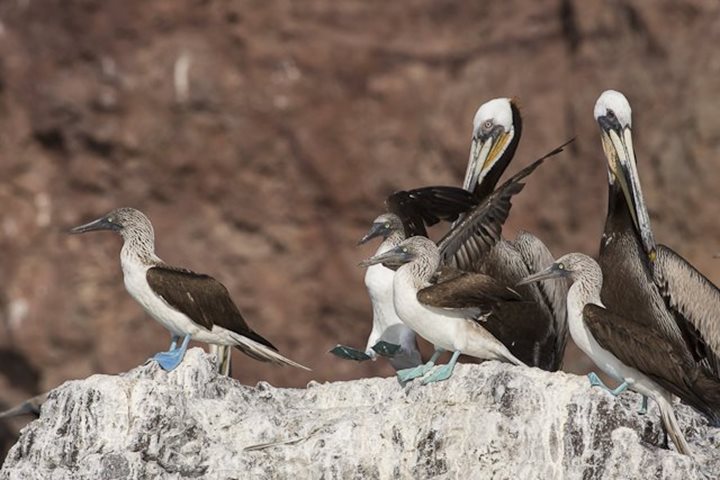Wind was very important for the ships of the olden days. Great sails picked up their energy and propelled these ships forward. No wind was a doldrum! But today we use energized ships using different fuels, and we move even faster! Last night we fought strong winds from the northeast, and managed to make a safe and comfortable anchoring site at Ensenada Grande (Big Bight). As soon as the sun started peeking over the rocky mountains of this protected island, we began our activities. After breakfast we heard from our expedition leader and staff, and we went off to a lovely (but yes, windy) beach, to begin our walks into the island, along a dry arroyo or river bed, enjoying all the information on geology, plants, and animals seen.
The dominant plants to be seen here are the cacti, of which we saw quite a few species (even eight species in a small rocky circle), as well as a few other interesting plants, a few which were in bloom. These were blue morning glories, coralvine, and Dissodia, with its virulent orange flowers. One little scorpion was found under a big rock! Some of us were luckier, and saw the large black jackrabbit and the very small antelope ground squirrel, both endemic mammals to this island. A reddish dragonfly followed us about for a while, and we saw lovely butterflies on the Dissodia.
After we had returned from these morning walks, we had a delicious lunch and began our afternoon activities:, snorkeling in these refreshing waters, and enjoying the big number of colorful fishes, as well as taking part in tours along the rocks of the bay in our expedition landing craft. Back to the ship for cocktail hour, and the typical Recap, where we were illuminated by our National Geographic photographer, Michael Melford , as well as by the naturalists.

